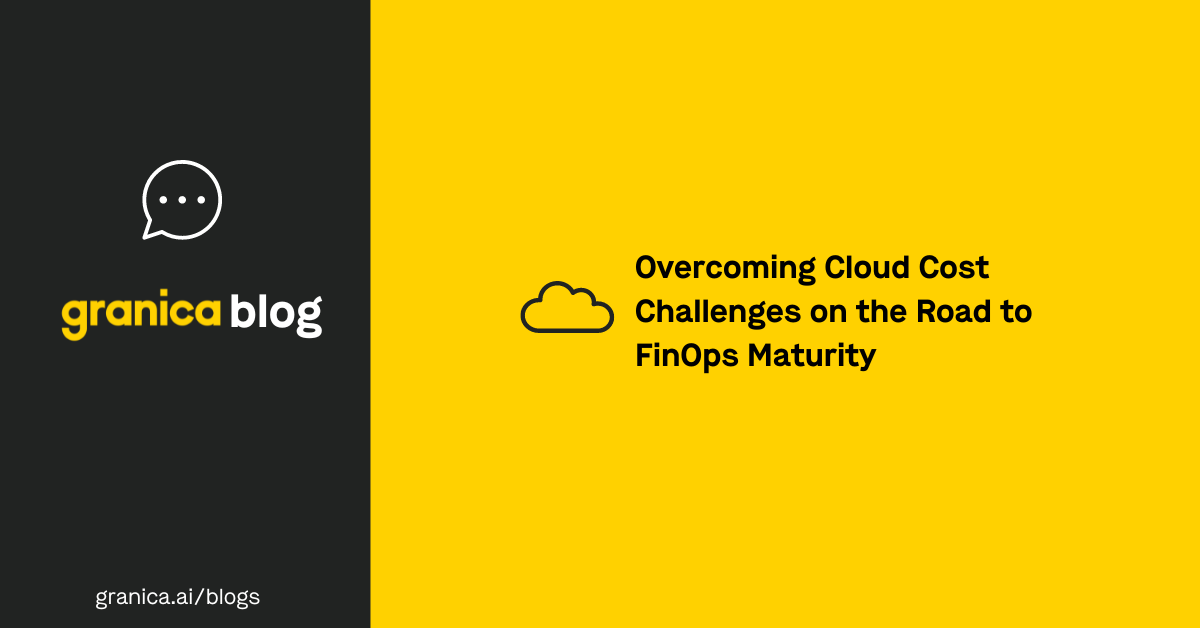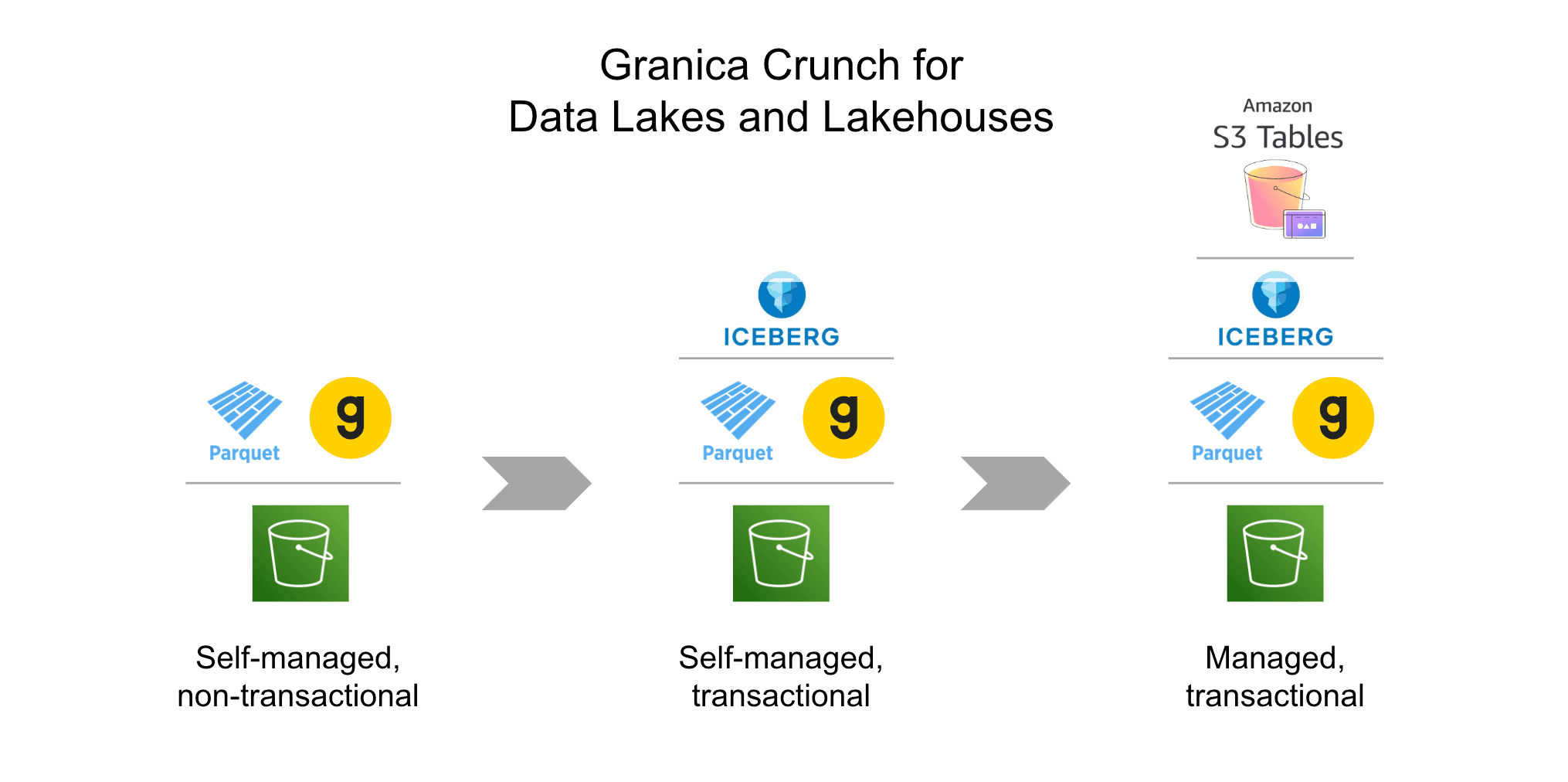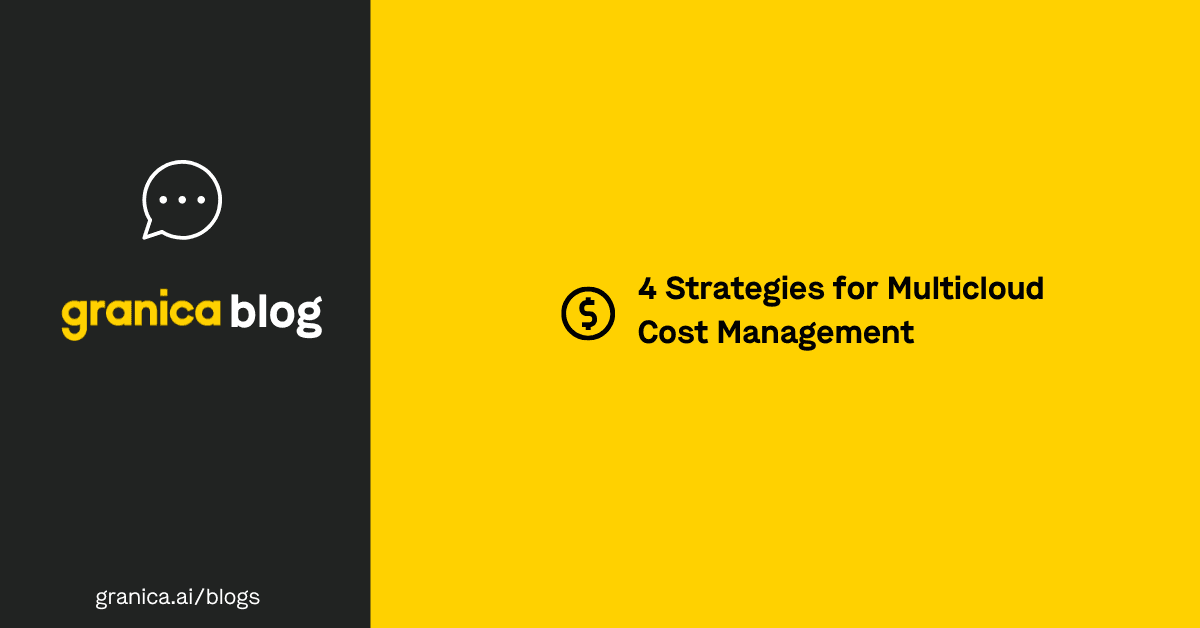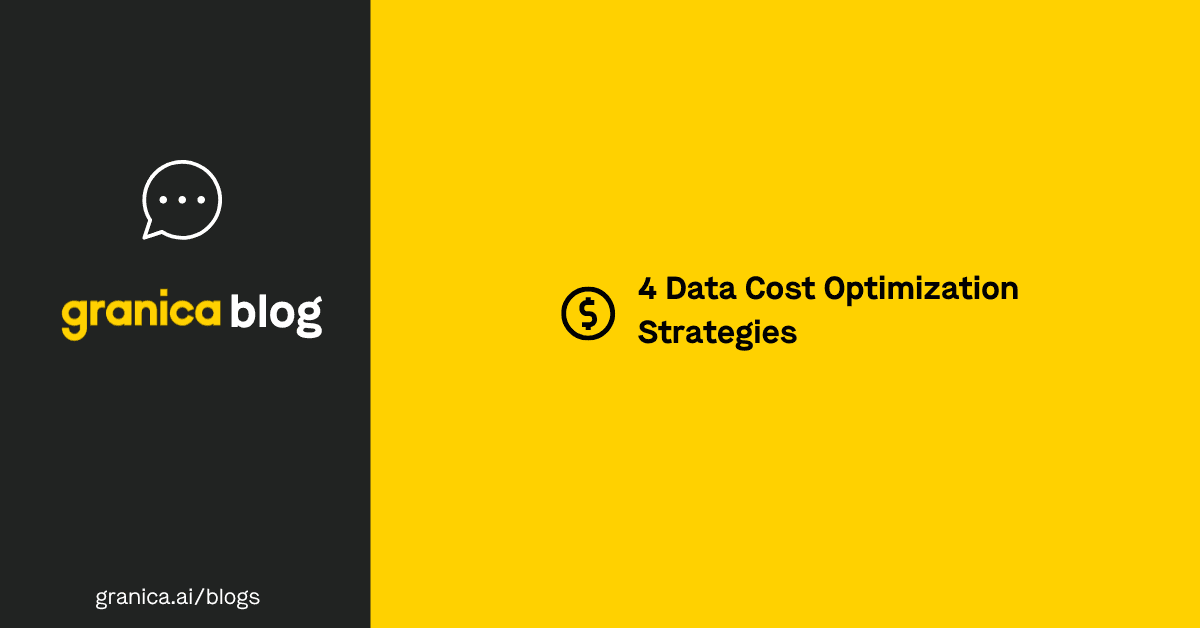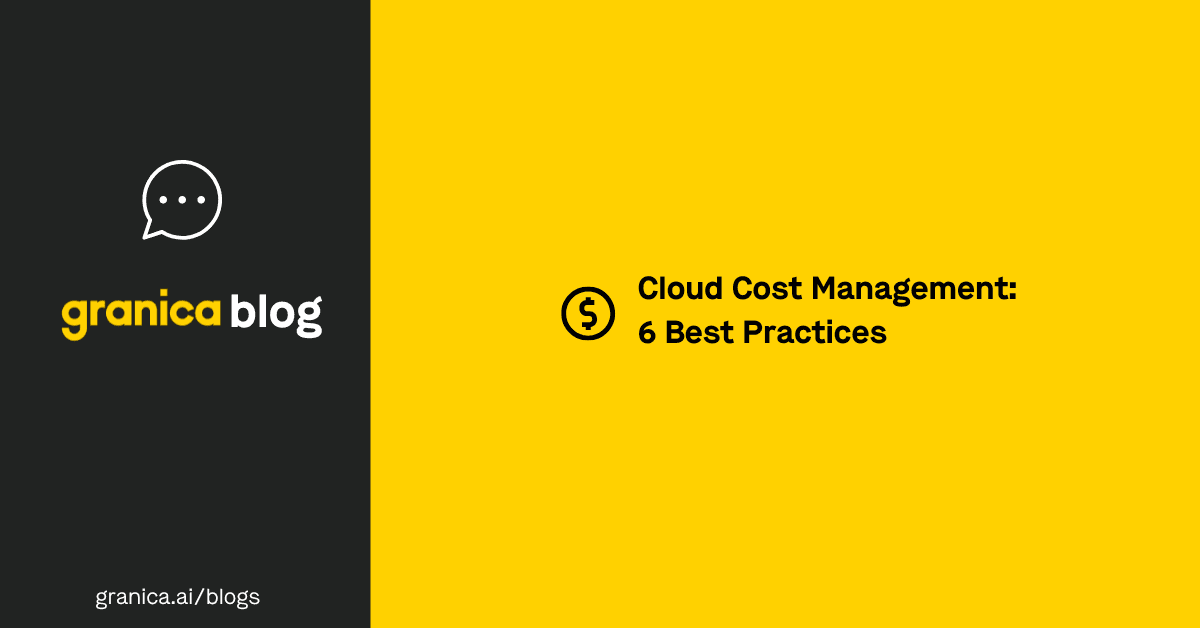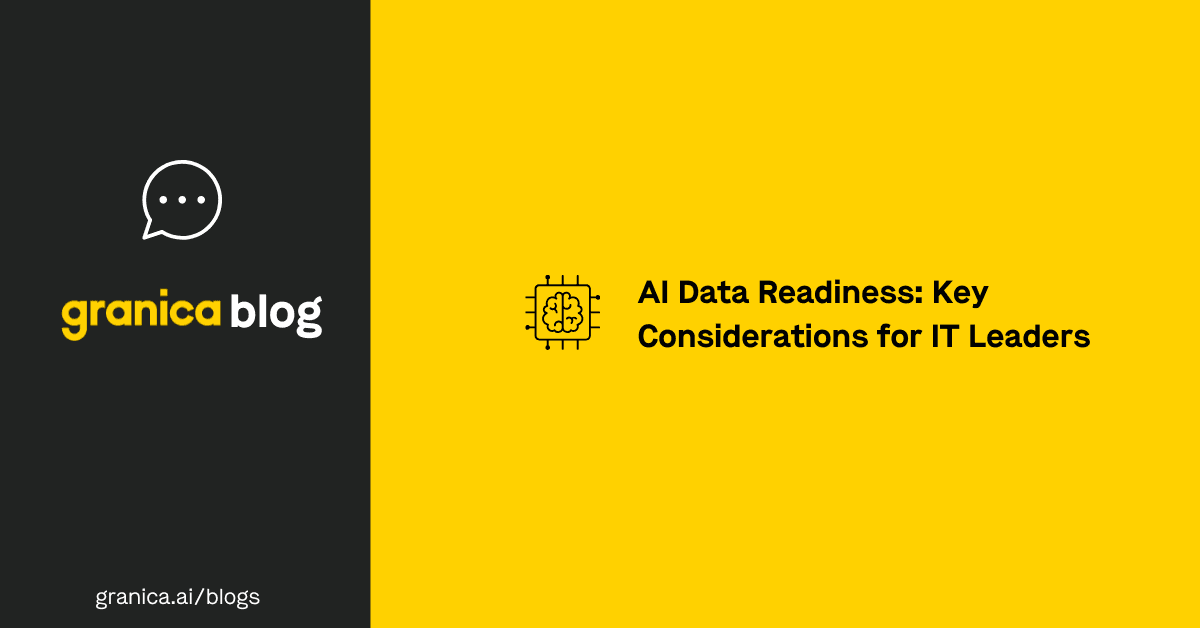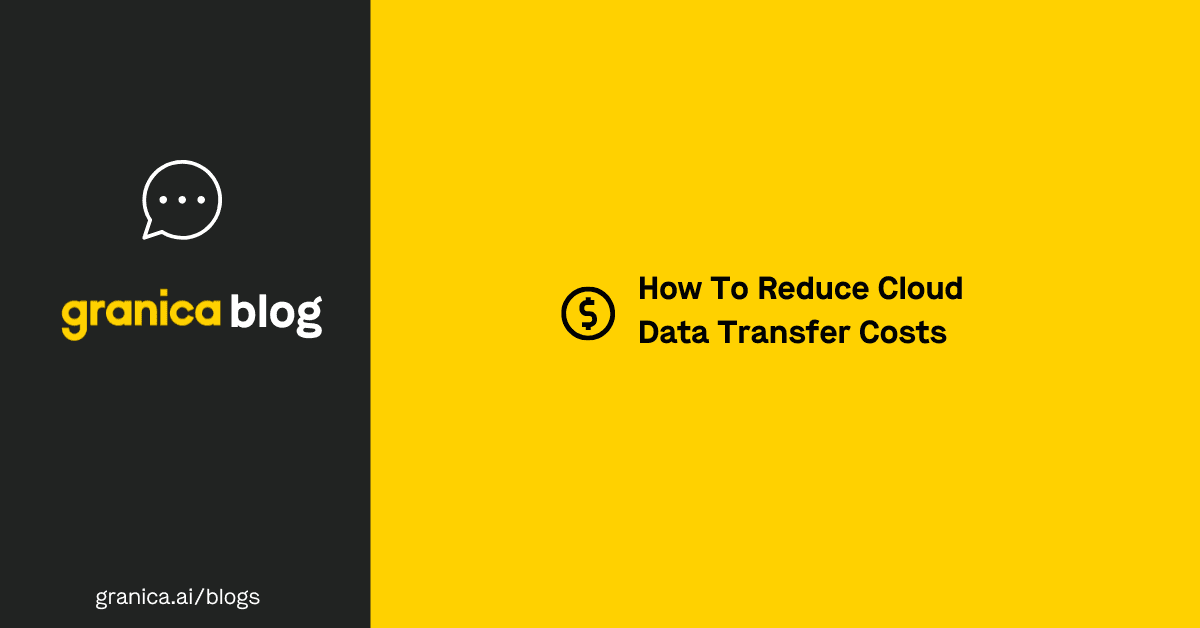Most savvy organizations already use optimization strategies to control cloud costs. Out of 1,200 respondents to the 2024 State of FinOps survey, more than 90% of organizations report optimizing their data storage and compute instances. However, these organizations now face an even steeper cloud cost challenge: staying efficient.
As an example, medical technology supplier Novanta used optimization strategies to increase cloud utilization from 2% to 55% over a three-year period. Now, the company seeks ways to maintain efficiency and fortify resilience in an evolving cloud landscape.
Even with heavy optimization, many organizations still encounter a number of hurdles. These obstacles can prevent them from reaching FinOps maturity — a state in which organizations have a process for aligning cloud costs with business values, addressing cloud inefficiencies, and evaluating their level of efficiency continuously. At this stage, FinOps is fully-baked into the business. Reaching this stage of maturity requires that companies overcome a few major cloud cost challenges.
The crawl, walk, run approach to FinOps maturity
FinOps practitioners use a “crawl, walk, run” approach to optimize cloud costs. Organizations start out at a crawl and eventually progress to the run stage, in which they approach FinOps maturity. It’s worth noting that a FinOps strategy requires continuous improvement, even after reaching the run stage.
-
Crawl: Allocate at least 50% of cloud costs. Address all “low-hanging fruit” related to cost inefficiencies. Track essential cloud cost KPIs. Start tracking and reducing unit economic costs on a per-unit basis.
-
Walk: Allocate at least 80% of cloud costs. Address edge cases that have the greatest impact on cloud costs. Identify more complex edge cases and make plans to address them. Begin automating processes.
-
Run: Allocate 90% of cloud costs, ideally more. Address the most difficult edge cases. Automate as many processes as possible. Track high-level KPIs. Promote a culture of continuous improvement.
Many businesses hit roadblocks between each stage. The transition between walk and run can be especially tricky to navigate, because groups in the secondary stage have already addressed some of their most egregious cloud cost inefficiencies — those related to compute, storage, networking, SQL, and data warehouses, to name a few.
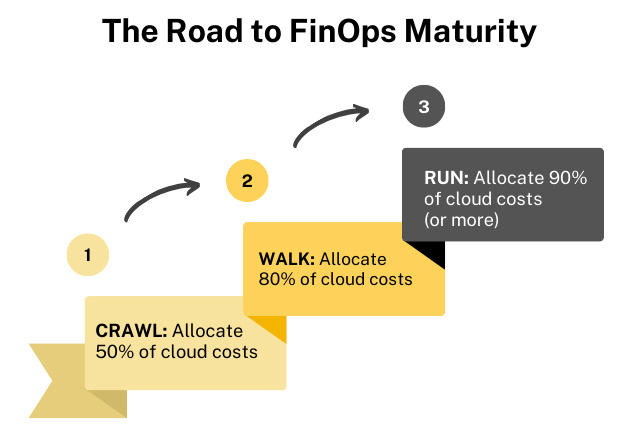
Where do company leaders go from here? To break into a run toward FinOps maturity, organizations must address three cloud cost challenges that obstruct peak efficiency: a companywide lack of FinOps adoption, team collaboration, and automation.
Three cloud cost challenges that prevent FinOps maturity
Cloud Cost Challenges
- Insufficient FinOps adoption across the organization
- Poor collaboration among teams
- Lack of automation
 Insufficient FinOps adoption across the organization
Insufficient FinOps adoption across the organization
The challenge: Some organizations rely too heavily on IT teams to reduce cloud costs. While data storage and compute costs account for a significant portion of the cloud budget, these aren’t the only cloud cost challenges businesses should address. Poor FinOps adoption outside the IT department leads to inefficiencies that hinder business goals.
The solution: Expand FinOps adoption by following the core principles of FinOps maturity. This includes:
-
Cloud usage ownership. All stakeholders monitor, manage, and report their individual cloud usage to ensure they stay under budget.
-
Data visibility. All stakeholders can see and share forecasts, budgets, allocated costs, trends, variance analyzes, benchmarks, and more.
-
Cloud unit economics. The organization tracks unit cost metrics and unit revenue metrics to assess profits and identify optimization opportunities to increase profitability.
-
Centralized high-level decisions. A team of FinOps practitioners looks for optimization opportunities, negotiates rates, facilitates executive buy-in, and ensures stakeholders follow best practices.
 Poor collaboration among teams
Poor collaboration among teams
The challenge: FinOps is a holistic process that encourages collaboration among all stakeholders, from engineers to executives. Unless organizations actively encourage teams to collaborate, it’s difficult to reach FinOps maturity. Lack of collaboration is especially problematic for engineers.
For instance, billing data silos make it impossible for engineers to understand what’s driving cloud costs across the cloud environment. As a result, they may feel less inclined to innovate or utilize all resources allocated to them for fear of going over budget.
The solution: These three steps can facilitate better collaboration among stakeholders.
-
Use communication portals and visualization tools. Look for tools that display the entire cloud environment — everything from billing and spending insights to data pipelines and allocated resources.
-
Incentivize teams. Allocate cloud costs to specific teams and recognize their efforts to stay efficient. Encourage teams to share their successes companywide.
-
Bring engineers into the cloud cost conversation. Ensure the IT and financial departments work together to design new budgets and forecast costs. Engineers can help the finance department understand cost-to-business-value ratios—sometimes, the costlier cloud service is more valuable if it leads to better performance.
 Lack of automation
Lack of automation
The challenge: Time-consuming manual processes are prone to human error. For instance, if IT and line of business (LOB) teams must tag or compress data manually whenever they add new data to a lake, it takes up time that would be better spent on core business functions. When such tasks decrease in priority, teams may be less likely to perform them consistently. This leads to small cloud cost inefficiencies that can build up over time.
The solution: Automate as many manual processes as possible to improve consistency and free up time. Consider automating the following processes:
- Data lake compression
- Data classification and tiering
- Cloud cost forecasting and budgeting
- Usage pattern reporting
- Notifications for unexpected costs, usage spikes, and anomalies
- Cost allocation (including chargebacks and showbacks)
- Access permissions (including unusual activity detection)
- Sensitive data detection and masking
- Real-time responses to security breaches or anomalies
Using best-in-class optimization tools, organizations can overcome these cloud cost challenges and finally achieve FinOps maturity.
Reach FinOps maturity with Granica
Granica Crunch provides a data lake compression service that automates the compression process for petabyte-scale data, helping businesses overcome data-related cloud cost challenges. With Granica Crunch running in the background, businesses can reduce the cost to store and transfer their data by as much as 80%.
The product uses novel lossless compression algorithms to automatically crunch new data as it enters cloud data lakes and cloud storage buckets. IT and line of business teams no longer have to spend time compressing each byte of data manually or building complex data pipelines. What’s more, Granica Crunch is adaptive. It performs continuous scanning and statistical analyzes at the byte level and automatically routes data through the most efficient compression model to minimize unit economic costs ($/GB) and maximize savings.
An outcome-based pricing model means Granica Crunch has no upfront costs; users only pay a small percentage of the realized cost savings each month. If the product doesn’t result in savings, users pay nothing.
The risk-free nature of Granica Crunch, coupled with its best-in-class compression algorithms, make it the perfect choice for businesses hoping to reach FinOps maturity this year. Explore an interactive demo of Crunch today.
